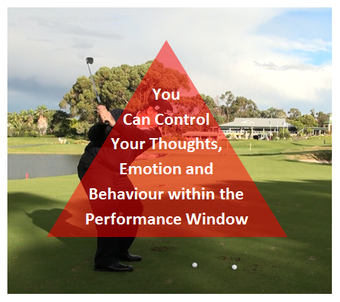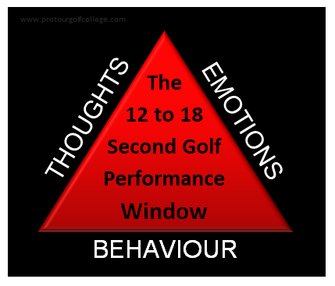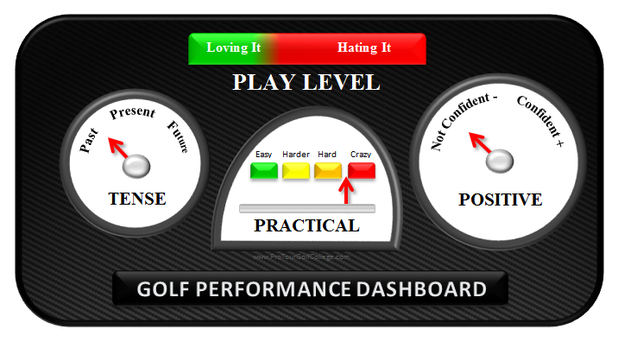 How do great golfers like Open Champion Phil Mickelson practice their golf skills? Specifically what do they do with their time when they go to work on developing and improving their golf skills? This is an interview from Science Friday with sports scientist Mark Smith who is the Principal Lecturer, School of Sport and Exercise Science University of Lincoln, Lincoln, United Kingdom on how to practice golf skills to improve performances on the golf course. The part of the interview with Phil Mickelson (which begins at 7:50 reveals some great insights into how and why Phil practices the way he does to improve his performances on the golf course. Interestingly he states that psychology for him is based on how he practices. If he practices the right way, he suggests that it helps his focus and performance in golf tournaments. Enjoy listening to this super interview. Lawrie Montague and David Milne - Pro Tour Golf College Your Success On Tour is Our Business Why This Little Known 4 Step Structure Builds Mental Toughness in Amateur and Professional Golfers3/8/2013
 When you hear the term ‘mental toughness’ in golf what do you think it relates to? Do you think it describes a tough minded professional golfer with a ‘never give up’ attitude - a golfer who just keeps bouncing back from bad breaks and setbacks on the golf course? Sports psychologist Jim Loehr has described mental toughness this way: “Mental toughness is the ability to consistently perform towards the upper range of your talent and skill regardless of competitive circumstances.” Before we explore what I think mental toughness is for golfers (I think it is quite a different form of toughness to other sports) let me ask you a simple question: “What would the ideal mindset be for someone playing a sport where you spend more than 5 hours at the venue but only perform it for less than one percent of that time?” Interesting question right? Golf is one of the most challenging of all sports because you have a lot of time where you are not doing much more than walking to your ball. So out of five hours on the golf course if you say that each golf stroke from putting to tee-shots takes about two seconds to perform and your golf stroke average was 80, then you would be actually performing at golf for about 2 minutes and 40 seconds out of the five hours that you are on the golf course. If my math is correct you are actually executing golf strokes for less than one percent of the total time you spend on the golf course! But let’s go back to my question again and rephrase it slightly. “what would the ideal mindset be for someone playing golf where you spend more than 5 hours on the golf course but only perform your golf strokes for less than one percent of that time?” Golf is one of the few sports where you spend an inordinate amount of time not performing! In most sports you are performing for most of the time that you are there. I bet you can understand why the game is so difficult if you consider the amount of random thoughts that go through your mind every ten seconds?  And the thing about all these random thoughts is that they’re completely normal and are not really a problem except when those thoughts (that are not real by the way) somehow influence your decision making process prior to hitting a golf shot in a negative way. You know the “don’t hit it there” type of thinking? To translate Jim Loehr’s quote another way; mentally tough golfers have developed their ability to consistently perform to the best of their current level of ability when they are hitting a golf shot anytime and anywhere. So let’s say that you take 80 strokes the next time you play a round of golf. There will be 80 separate times over five hours where you will have to go through the process of hitting a golf shot from all sorts of places on the golf course with the goal of producing the best score you can at the end of every hole. 80 separate times. The Golf Performance Window Now the top professionals take between 12 and 18 seconds to walk into their shot and hit it and what we have discovered is that their routine from one stroke to the next over 18 holes varies by less than one second every time. They can manage their thoughts consistently within a 12 to 18 second performance window.  Here’s a quick exercise that I want you to try right now. Take your stop watch out, or if your phone has a timer on it set the timer to fifteen seconds. Now when you push the start button I want you to attempt to think about just one single thought until the buzzer goes off at fifteen seconds. How did you go? Not easy is it? In-fact it almost impossible to hold just one conscious thought over fifteen seconds. Buddhist monks who meditate everyday for their entire life to develop stillness of mind would find it difficult to keep one conscious thought over 15 seconds. So your mind cannot be as blank as a canvas before the paint, and your mind cannot be blank before you hit your shot. You are going to have some thoughts so you need to make sure that these thoughts have a consistent structure to them, just as if you were taking a lesson from your golf instructor to develop some aspect of your golf swing technique and a step-by-step structure would be employed.  A Thinking Structure is the Key Structure leads to stability and stability leads to consistency. Basically you are controlling two structural factors to influence a third. The two structural factors are your thoughts and your emotions (feelings) to influence your behavior (action) within the performance window. Think about a time recently on the golf course where your thinking influenced your feelings about a shot in a negative way and the result was a poor shot. Your structure needs a thought strategy - not just a physical one like your pre-shot routine. What’s the point of having a great physical routine if your pre-thoughts and feelings routine is inconsistent or just plain awful? Your pre-shot routine should involve a great thinking/feeling structure that becomes as consistent as your physical routine. Have you noticed that professional golfers have a certain behavioral style that is consistent from golfer to golfer. Notice how different they react compared to sportsmen and women from other types of sports. They are much more conservative with the use of their emotional energy. They are slower and more deliberate which is consistent with the nature of the game. For example up-time is 1 percent and down-time is 99 percent. How should you act in a sport with those ratio's? Because you’re out there on the golf course for a very long time the discipline you seek is to be consistent at keeping your emotions in check. More physical and fast moving sports have a very different mental makeup, and a very different type of toughness compared to golf. To be tough in golf is to be consistent at performing your mental/physical routine within the 12 to 18 second window and The Golf Performance Dashboard will help you organize your thoughts so that it leads to feelings you can trust, and golf swings that produce more good golf shots during your round.  The Golf Performance Dashboard If you've ever watched any type of car race you know that the driver drives the car using instruments that help him/her know how the cars engine is performing at any time during the race. Their skill is in managing the different factors to keep their engine performing optimally is the key to performing to the best of their ability. Remember your thoughts are operating within a 12 to 18 second performance window (your pre-shot routine) and your job is to manage four factors on the following dashboard on every shot you play.
The great thing about the golf performance dashboard is that it helps you to develop a simple thinking strategy that leads you through the performance window. Remember that it is important to have a good structure for executing your pre-shot routine, but without a good thinking strategy to compliment it, it will be ineffective. It will be helpful to go through a golf performance window time check on the practice fairway to calibrate your mental/physical routine so you can match it up to within a second each and every time. The following simple model will help you to do this and my recommendation is to do this as soon as possible to see how consistent and effective your pre-thinking-shot-routine is. You can see in the example the variation between shots and in the summary column the actual difference in time from one club and another. Also get your coach, playing partner, in-fact anyone who can help you to periodically time your routine on the golf course when you are not aware of it. Time 10 shots over 18 holes and then compare each time window to see how consistent or inconsistent you are. Is the time the same on the practice range to the golf course for the same clubs? But what does it look like when you don’t manage your thoughts within your pre-shot routine? For example let’s say that you have a habit of focusing too much on results in the past and this influences you to force your game to amongst other things try to play crazy golf shots that rarely - if ever come off. You might think that you are confident at pulling the shot off but you are kidding yourself, and as a result you will not be enjoying playing each shot as it comes because you will spend your moments not where you’re standing but more than likely thinking about how unfortunate you've been and that you have no luck! Your dashboard might look something like this. You can see that there’s a fine line between playing well and playing poorly and your thoughts during your pre-shot routine will definitely be the main factor in whether you will feel confident and in control of your game, or whether you feel out of control.
You’ll discover that managing these four factors on the golf performance dashboard on every golf stroke will help you develop and manage two crucial elements; feel and trust. When you play golf shots you rely on the feel of your stroke from putt to drive, and trust is directly connected to your feel, and your feel is directly related to the thoughts you have within your 12 to 18 second window. If you manage these simple metrics you will manage your golf stroke performance from shot-to-shot. This is what mental toughness is for a golfer. Manage your thoughts within the golf performance window over and over. This simple dashboad structure will guide the type of thoughts that will lead you to lower golf scores and better performances when it matters. So give it a try and plug your mental game into the golf performance dashboard and measure your four performance factors inside your performance window to find out where your thinking is at right now. Lawrie Montague and David Milne - Pro Tour Golf College Your Success On Tour Is Our Business "We hear that officials have to take action, but what about players themselves taking responsibility, as that is the only way things are going to change". With rounds of golf taking well over five hours to play all over the world, less and less people are taking up the game of golf as it takes too long to complete a round. Administrators of clubs, golf associations and professional tours are trying to take action, but it's too-little-too-late and now it has filtered into junior golf. It is common these days for rounds of eighteen holes to take more than five hours and no one seems to care, well almost! This year at the US Masters teenager Guan Tianliang was penalised one shot in the 2nd round which almost cost him making the 36 hole cut. Another teenager sensation from Asia Hedeki Matsuyama during the British Open this year also was given a one stroke penalty for slow play. Last time someone was docked a shot at the Open was in 2004. Is this indicative that young golfers from Asia are being targeted, or is this slow play problem worse in Asia? I don't believe they are being targeted, but more the case of these two youngsters not being familiar with the rules at professional golf tournaments, and simply got found out. Mind you in recent times the qualifying rounds at a National Amateur Championship in South East Asia took close to seven hours (you read correctly) and regular junior stroke play events taking six hours is the norm. So there is a serious problem that has to be corrected, not just in Asia but all around the world.  So what has caused this problem all around the globe? Is it the pace of play that golfers watch on TV caused by the amount of money on offer? When Jack Nicklaus won his last British Open he won US $144,000.00 and this year the 11th place earned more than that? Is it the golf ball that Jack Nicklaus is suggesting part of the problem? He believes that the distance the modern golf ball travels is contributing to making normal golf courses obsolete with regards to effectively making them play shorter. Or are the sports psychologists contributing to it by influencing golfers to "not hit a shot until they are fully ready and committed". So now we have players backing off their shots repeatably and taking forever to play. I don't believe it's any one problem but a combination of all the above and more. We hear that officials have to take action, but what about players themselves taking responsibility, as that is the only way things are going to change. The game of golf has always prided itself on developing golfers that play by the rules, and maintaining the etiquette of the game for all golfers to enjoy. Many veteran professionals once they get the first official warning and are on the clock speed up until the official moves on to time another competitor, and then they go back to playing as they call it "deliberately". Colin Montgomery has suggested that as every group in a major has an official accompanying each flight that there should be a "shot clock" for each shot played by the competitors! This is the same player that took nearly five minutes to hit a golf shot on the final hole of a US Open, and possibly caused Tom Lehman (who was playing behind him) to "dunk" his shot into the water and take a double bogey to lose! It has to start from the top for this issue to rewind the clock so a round of golf takes 3 1/2 hours like it use to. The starting point is the professional golf tours who have to take this seriously and encourage their members to set the standard. This as I have mentioned has to be self regulated for it to work. The rest will follow, especially the junior golfers who are the next generation that will make five hour rounds a thing of the past. Each year 3 million people around the world stop playing golf and the main culprit is slow play. We owe it to them to change this slow play plague that is infiltrating the culture and driving people away from this great game instead of bringing them to it. David Milne and Lawrie Montague - Pro Tour Golf College Your Success On Tour is Our Business |
Archives
June 2019
|
Proudly Supported By
Copyright © 2011 - 2018 Pro Tour Golf College
Website Managed By Golf Performance Media
All Rights Reserved
Website Managed By Golf Performance Media
All Rights Reserved





 RSS Feed
RSS Feed



